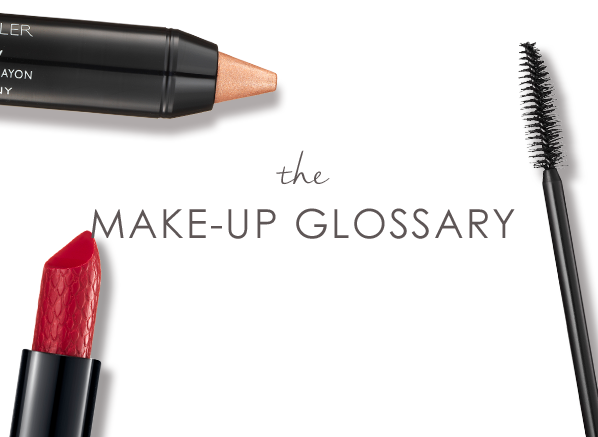
Anti-Pollution
These formulations contain a barrier-like complex that form a surface film on the skin to shield it from external aggressors
Bleeding
When lipstick runs into the wrinkles and creases around the lips. Bleeding can be prevented with the use of a lip liner.
Collagen
A protein that helps to make young skin firm.
Dermatologist-Tested
The product has undergone trials for skin-friendliness under dermatological conditions.
Elastin
A protein that makes young skin springy and resilient.
Emollients
A skin care substances that deliver moisture to the epidermis and soften and smooth the skin
Free Radicals
Molecules responsible for premature aging and tissue damage, although antioxidant ingredients can help prevent them settling on skin
Hypo-Allergenic
Products that are formulated without any known allergens.
Light-Diffusing
Reflective molecules that bounce light away from fine lines and wrinkles.
Matte
A non-shiny, dense colour formula.
Mattifying
Formulated to minimise facial shine by absorbing excess oils.
Metallic
A cosmetic effect created by reflective pigments in metal shades such as gold, silver, copper and bronze.
Mineral Make-up
Made of natural, finely ground minerals derived from the earth without chemical binders, dyes or preservatives
Ophthalmologist-Tested
Products have been approved by ophthalmologists so as not to aggravate eyes. Especially useful for contact lens wearers
Pearlescent
Shades are those that contain iridescent molecules wherein two colours can be fused together.
Pigments
The dyes in make-up that provide a rich hue and depth of colour
Polymers
Synthetic or naturally produced to thicken and bind make-up formulations so as to change their consistency.
Non-comedogenic
A term applied to oils, lotions, and skin creams that do not block pores.
Satin
A non-shiny, but smooth colour formula.
Sebum
The natural oil produced by the skin.
Sheer
Cosmetics shades with minimum colour pigment, that are often translucent in finish.
Silicone Oils
Used in cosmetics to keep formulas in liquid form and aid smooth application. When described as ‘Volatile’ they evaporate quickly on exposure to air.
Sunscreen (SPF)
Prevents harmful UV rays reaching the skin, which could cause burning and premature ageing.
Translucent
Is almost transparent in finish.
UV
Ultra-violet light from the sun.
Vitamin E
Sometimes called tocopherol, vitamin E is a renowned anti-oxidant and is often used in cosmetic formulas with anti-ageing benefits.





